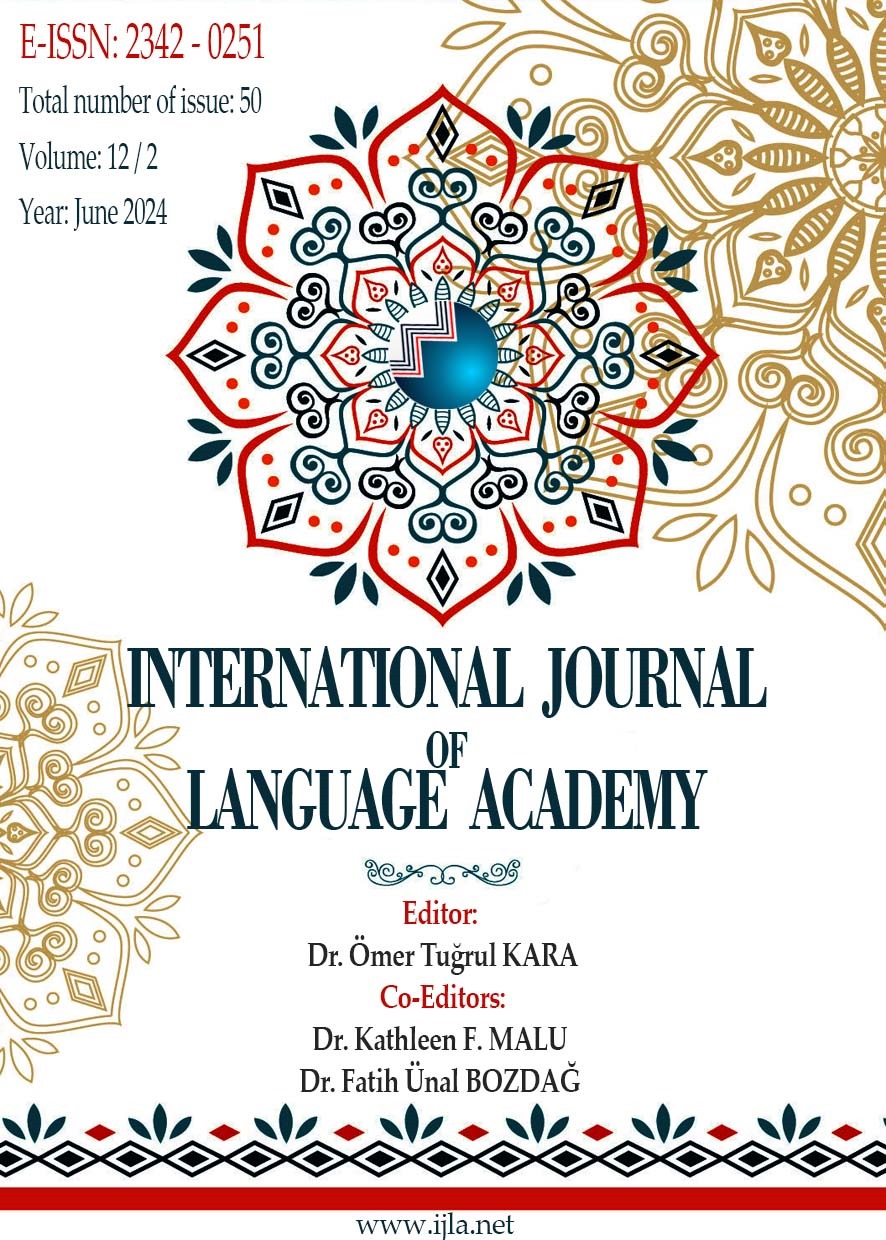Author :
Abstract
Otantik materyaller, hedef dilde öğretici amaçlı bilgiler iletmek yerine ana dili konuşucuları tarafından doğal yaşam içinde hazırlanan materyallerdir. Dil öğretme kaygısı taşımadan üretilmiş ancak dil öğretiminde kullanılan materyallerin tamamı otantik materyallerdir. Türkçenin yabancı dil olarak öğretiminde en çok yararlanılan kaynaklar ders kitaplarıdır. Ders kitabı haricinde materyal kullanmak dil öğretimi sırasında hem motive etmesi hem de günlük hayattaki dilin zenginliğini göstermek bakımından önemli olacaktır. Yabancılara Türkçe öğretiminde ihtiyaca yönelik çeşitli materyaller kullanmak öğrenmeyi doğrudan etkileyen ve öğrenci başarısını artıran unsurlardan biridir. Bazı araştırmacılar otantik materyallerin yalnızca üst dil öğrenim düzeylerinde kullanılması gerektiğini savunurken bazı araştırmacılar temel seyide de kullanılabileceği görüşünü savunmuştur. Bu araştırmada Türkçenin yabancı dil olarak öğretiminde otantik materyal kullanımının öğrenme üzerindeki etkisinin tespit edilmesi amaçlanmıştır. Nicel araştırma yöntemlerinden ön test – son test kontrol gruplu yarı deneysel desenin kullanıldğı bu çalışmada veriler araştırmacı tarafından geliştirilen başarı testi yoluyla toplanmıştır. Araştırmanın çalışma grubunu Uşak Üniversitesi Yabancılara Türkçe Öğretim Merkezi (TÖMER) A1 seviyesinde öğenim gören 34 öğrenci oluşturmaktadır.
Araştırmanın sonunda, yabancılara Türkçe öğretiminde otantik materyallerin kullanıldığı grup ile otantik materyallerin kullanılmadığı grubun verileri arasında anlamlı bir farklılık görülmemiştir. Ancak uygulanan son testte deney grubundaki öğrencilerin başarı ortalamalarının kontrol grubunda yer alan öğrencilerin başarı ortalamalarından daha yüksek olduğu belirlenmiştir. Bu durum görsel, görsel-işitsel ve yazılı otantik materyallerin kullanımının öğrenmeyi olumlu etkilediğini göstermektedir.
Keywords
Abstract
Authentic materials are materials prepared by native speakers in natural life, rather than conveying didactic information in the target language. All materials used in language teaching, produced without any concern for language teaching, are authentic. The most used resources in teaching Turkish as a foreign language are textbooks. Using materials other than textbooks will be important during language teaching in terms of both motivating and showing the richness of the language in daily life. Using various materials in teaching Turkish to foreigners is one of the factors that directly affects learning and increases student success. While some researchers argue that authentic materials should only be used at metalanguage learning levels, some researchers argue that they can also be used at the basic level. This research aims to determine the effect of using authentic materials on learning in teaching Turkish as a foreign language. In this study, in which a quasi-experimental design with a pretest-posttest control group, one of the quantitative research methods, was used, data was collected through the achievement test developed by the researcher. The study group of the research consists of 34 students studying at the A1 level at Uşak University Center for Teaching Turkish to Foreigners (TÖMER).
At the end of the research, no significant difference was seen between the data of the group in which authentic materials were used in teaching Turkish to foreigners and the group in which authentic materials were not used. However, in the post-test, it was determined that the success averages of the students in the experimental group were higher than the success averages of the students in the control group. This shows that the use of visual, audiovisual, and written authentic materials positively affects learning.





